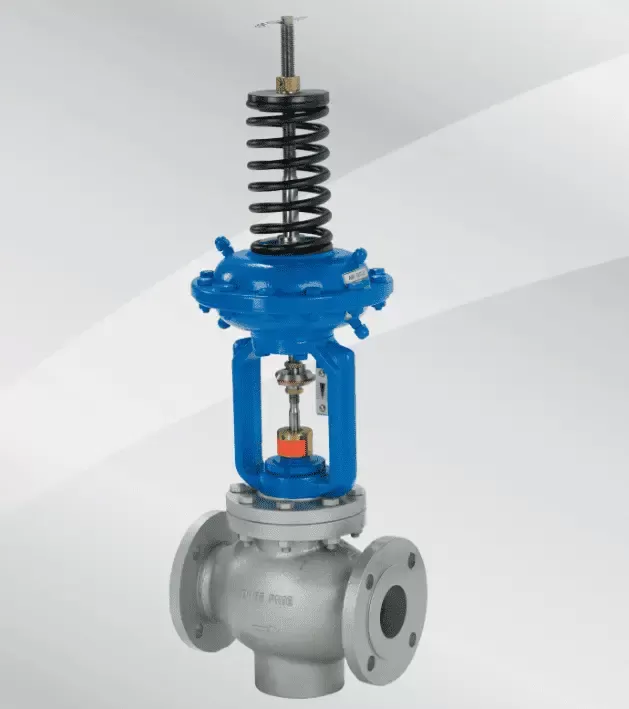Notifications

6 minutes, 26 seconds
-3 Views 0 Comments 0 Likes 0 Reviews

Introduction
In heating, ventilation, and air conditioning (HVAC) systems, maintaining optimal pressure and flow rates is essential for both efficiency and safety. Differential Pressure Control Valves (DPCVs) are critical in achieving this balance. These China Control Valves are designed to regulate pressure within specific sub-circuits of heating or cooling systems, ensuring that equipment operates within its ideal parameters. By preventing excessive pressure differentials, DPCVs help protect system components, improve energy efficiency, and ensure overall reliability. This article provides a detailed look into the functionality, applications, installation, and benefits of DPCVs, underlining their importance in modern HVAC systems.
Differential Pressure Control Valves (DPCVs) are mechanical devices used in HVAC systems to regulate pressure within sub-circuits. Their primary function is to maintain a predetermined or maximum pressure differential (ΔP) across a specific section of the system. This control helps limit flow rates during full load conditions and ensures that the system operates within safe and efficient parameters, protecting against equipment damage and optimizing performance.
DPCVs are commonly used in hydronic heating systems, chilled water loops, and other HVAC applications where pressure regulation is crucial. They are especially beneficial in systems with variable flow rates, such as those using pumps or fans that adjust their output based on demand. By stabilizing pressure differentials, DPCVs ensure consistent system performance even under fluctuating loads.
Heating Systems
In hydronic heating systems, DPCVs regulate the pressure in sub-circuits like radiators or underfloor heating loops. By maintaining a steady pressure differential, these valves help ensure even heat distribution and prevent over-pressurization, which could cause equipment failure or leaks.
Chilled Water Systems
DPCVs are vital in chilled water loops, where they help maintain a constant pressure differential across the chiller. This ensures the chiller operates within its designed pressure range, preventing damage and maximizing cooling efficiency.
Variable Flow Systems
In systems with variable flow rates, such as those using variable speed pumps, DPCVs stabilize pressure differentials. This is particularly important in large or complex systems, where pressure fluctuations can cause inefficiencies or equipment malfunctions.
Energy Efficiency
By preventing excessive pressure differentials, DPCVs reduce the strain on pumps and other equipment, leading to lower energy consumption and reduced operational costs.
Proper installation is critical to ensure the effective operation of DPCVs. Below are key considerations for their installation in different systems:
Installation in Chilled Water Loops
In chilled water systems, the DPCV is usually installed on the bypass line between the supply and return piping of the chiller. This valve, often called a differential pressure bypass valve or pressure relief valve, is designed to maintain a constant pressure differential across the chiller.
Installation Tips:
Ensure the valve is properly sized for the flow rate and pressure drop across the chiller.
Install the valve in an accessible location for maintenance and adjustments.
Follow the chiller manufacturer's installation guidelines and system design documentation.
Installation in Heating Systems
In heating systems, DPCVs are typically installed in sub-circuits, such as radiator loops or underfloor heating systems. The valve should be positioned to regulate the pressure differential across the specific sub-circuit.
Installation Tips:
Position the valve close to the sub-circuit it is regulating.
Ensure compatibility with the system's operating temperature and pressure.
Regularly inspect and maintain the valve to ensure consistent performance.
Equipment Protection
DPCVs protect sensitive equipment, such as chillers, pumps, and heat exchangers, by preventing over-pressurization and pressure fluctuations that could lead to damage.
Energy Efficiency
By stabilizing pressure differentials, DPCVs reduce the workload on pumps and other equipment, leading to energy savings and lower operational costs.
System Reliability
By preventing pressure-related issues, DPCVs enhance the reliability and longevity of HVAC systems, reducing the risk of system downtime and expensive repairs.
Improved Comfort
DPCVs ensure even heat or cooling distribution in HVAC systems, enhancing comfort for building occupants by maintaining stable environmental conditions.
Compliance with Standards
DPCVs help HVAC systems comply with industry standards and regulations, ensuring safe and efficient system operation.
Differential Pressure Control Valves are essential components in modern HVAC systems, providing critical pressure regulation that ensures optimal system performance. Whether used in chilled water loops, hydronic heating systems, or variable flow applications, DPCVs protect equipment, enhance energy efficiency, and ensure reliable operation. Understanding their functionality, applications, and installation requirements allows HVAC professionals to design and operate systems that deliver superior performance while minimizing costs. As the demand for energy-efficient HVAC solutions increases, DPCVs will continue to play a vital role in the evolution of sustainable building systems.Know more about Google SEO Directory

